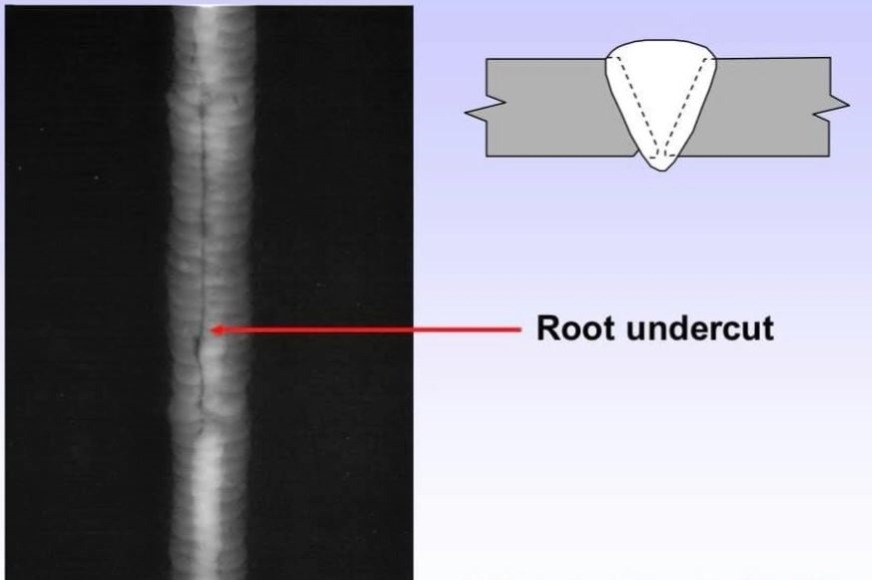Mastering the Art of Welding: Exactly How to Avoid Undercut Welding Issues for Flawless Fabrication Results
Efficiency and accuracy are extremely important in the globe of welding, where also the tiniest blemish can jeopardize the architectural honesty of a made item. One typical difficulty that welders face is undercutting, a problem that can lead and deteriorate a weld joint to expensive rework. By understanding the source of undercut welding and carrying out effective techniques to avoid it, welders can elevate their craft to new levels of quality (Preventing weld undercut). In the pursuit of perfect manufacture outcomes, grasping the art of welding to stay clear of undercut problems is not just an ability however a need for those pursuing excellence in their work.
Comprehending Undercut Welding

To avoid undercut welding, welders ought to guarantee correct welding specifications, such as readjusting the existing, voltage, travel rate, and preserving the correct electrode angle. Furthermore, making use of the proper welding strategy for the specific joint configuration is important. Using weaving activities or backstepping methods can help make sure appropriate weld metal deposition and decrease the chance of undercut development. Regular evaluation of welds throughout and after the welding procedure is likewise essential to catch any undercut very early and make needed adjustments to avoid further problems. Preventing weld undercut. By recognizing the reasons for undercut welding and applying safety nets, welders can accomplish high-grade, structurally sound welds.
Reasons For Undercut in Welding
Understanding the aspects that contribute to undercut in welding is crucial for welders to generate top notch, structurally audio welds. Inadequate welding current or inaccurate welding rate can also add to undercut. Recognizing these causes and carrying out correct welding techniques can help avoid damaging concerns, ensuring strong and resilient welds.
Strategies to avoid Undercutting

To minimize the danger of undercutting in welding, welders can utilize strategic welding techniques focused on improving the top quality and integrity of the weld joints. One effective technique is to readjust the welding specifications, such as voltage, present, and travel speed, to ensure proper warm input and deposition. Maintaining an ideal electrode angle and making certain regular travel speed can additionally aid avoid undercut. Furthermore, utilizing the appropriate welding strategy for the certain joint setup, such as weave or stringer beads, can contribute to decreasing undercutting. Preventing weld undercut.
Employing back-step welding strategies and managing the weld grain account can also help disperse warmth equally and lessen the danger of undercut. Regular inspection of the Read Full Article weld joint during and after welding, as well as executing high quality assurance measures, can aid in dealing with and finding damaging issues without delay.
Importance of Correct Welding Specifications
Choosing and maintaining appropriate welding parameters is important for achieving successful welds with marginal issues. Welding specifications refer to variables such as voltage, existing, travel speed, electrode angle, and securing gas circulation rate that straight influence the welding process. These criteria have to be meticulously changed based on the kind of product being bonded, its density, and the welding technique used.
Correct welding specifications make sure the ideal quantity of warm is used to melt the base steels and filler product consistently. If the parameters are established too high, it can lead to too much warm input, causing spatter, burn-through, or distortion. On the other hand, if the parameters are also low, insufficient blend, absence of penetration, or undercutting might take this hyperlink place.
Top Quality Guarantee in Welding Procedures

Final Thought
Finally, mastering the art of welding calls for a detailed understanding of undercut welding, its reasons, and strategies to stop it. By ensuring correct welding specifications and executing quality guarantee practices, perfect construction results can be attained. It is vital for welders to regularly pursue quality in their welding procedures to stay clear of undercut concerns and produce premium welds.
Undercut welding, a common flaw in welding processes, takes place when the index weld steel doesn't properly load the groove and leaves a groove or anxiety along the bonded joint.To stop undercut welding, welders need to make sure correct welding criteria, such as readjusting the present, voltage, travel speed, and maintaining the correct electrode angle. Poor welding incorrect or present welding speed can additionally add to damage.To reduce the danger of damaging in welding, welders can employ critical welding strategies intended at boosting the high quality and integrity of the weld joints.In conclusion, grasping the art of welding calls for an extensive understanding of undercut welding, its reasons, and techniques to prevent it.